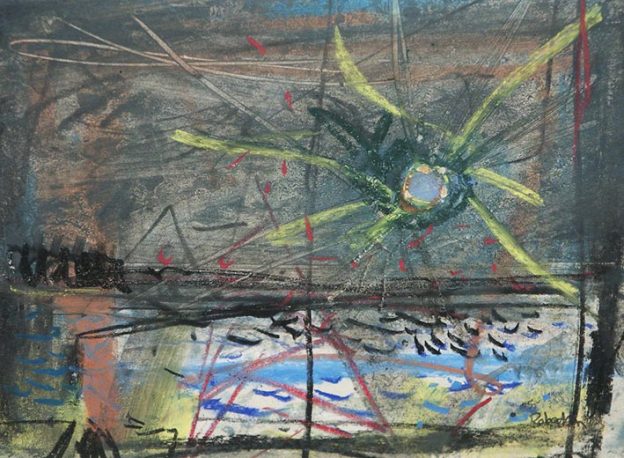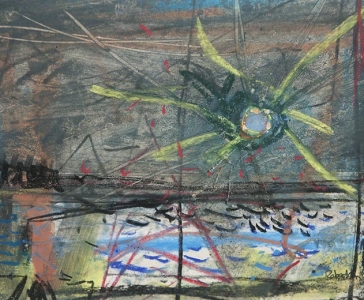James Robertson
James Robertson
James Downie Robertson occupied an important position within Scottish art. The inspiration for many of his paintings was the Clyde coast and West Renfrewshire, where he lived and worked for more than 30 years. As he put it: “I have been subjected to the landscape every time I go out and it’s fascinating how it changes through winter, spring and summer.”
For Jimmy, making a painting of a landscape had nothing to do with the photographic or the illustrational. It had everything to do with his personal vision. Stan Bell, in a poem about Jimmy’s paintings called this “landscape in form, in content, painted meditation”.
He was born in Cowdenbeath, Fife. The family moved to Glasgow at the beginning of the Second World War and, after showing a talent for art from childhood, Jimmy enrolled at Glasgow School of Art in 1950. There he found himself in the company of several extraordinary fellow students – Alexander Goudie, Duncan Shanks and Alasdair Gray, to name but a few, and was introduced to the work of his teacher, David Donaldson, as well as Joan Eardley.
After graduating, Jimmy travelled in Spain with his friend Dr George Fraser and, on his return to Scotland, took up a teaching position at Keith Grammar School. A year later, in 1959, he returned to the art school as a part-time lecturer in the Drawing and Painting Department. Jimmy began to make a name for himself and, after his first solo exhibition at the Douglas and Foulis Gallery in Edinburgh in 1961, recognition followed with his election to the Royal Society of Painters in Watercolours in 1962 and his appointment as a full-time lecturer in Drawing and Painting in 1967 at Glasgow School of Art.
He was elected an associate of the Royal Scottish Academy in in 1974, becoming a full member in 1989. The Royal Glasgow Institute elected him as a member in 1980. At the same time, he staged numerous exhibitions, and his paintings were eagerly sought-after.
He favoured a directness of expression, and never used preparatory drawings or kept sketch books, seeking instead a spontaneous reaction. “Every painting is a struggle. I persevere until I think I have won.”
Jimmy was an influential teacher, being a member of staff for 40 years. With his passionate belief in painting and through the example of his own work, he set exemplary standards. Once the director reported a student complaint that he had spent too much time working in his studio. “That’s the best compliment I’ve ever had,” said Jimmy.
He was outspoken, irreverent and politically incorrect, but when it came to analysing what had gone wrong in a painting and suggesting the best means of addressing the problem, he was without peer.



